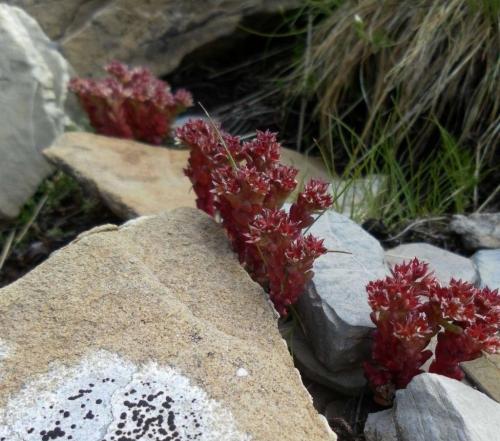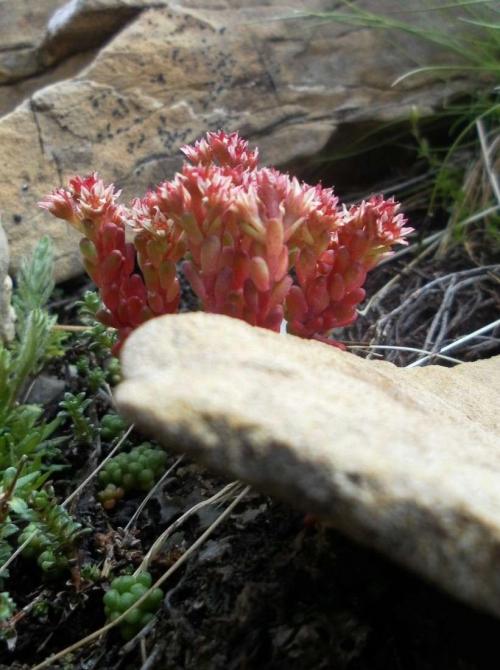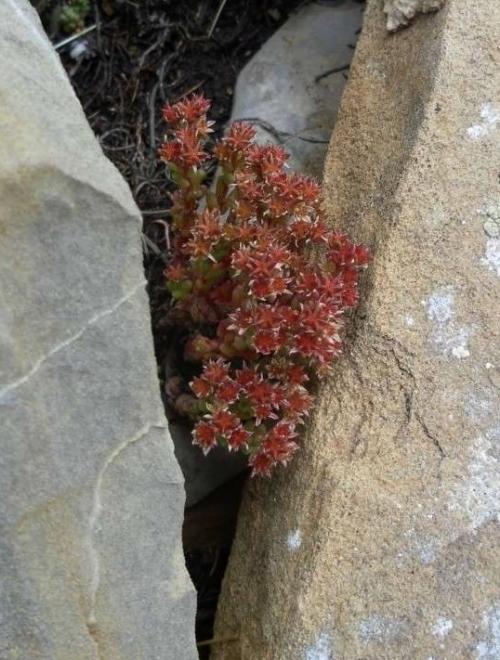ATRATUM L., 1763
Synonyms :
Sedella atrata (L.) Fourreau (1868)
Sedum atratum var. viride E.P.Perrier
Sedum haematodes Scopoli (1772)
Sedum rubens Jacquin ex Nyman (1879)
Sedum atratum var. carinthiacum Hoppe ex Pacher (1885) / Sedum carinthiacum (Hoppe ex Pacher ) Fritsch (1897) / Sedum atratum ssp. carinthiacum (Hoppe ex Pacher) Webb (1964) / Sedella carinthiaca (Hoppe ex Pacher) A.Löve & D.Löve (1985)
Sedum erubescens Sennen (1927)
Distribution : SW, C and SE Europe (Pyrenees, Alps, W Carpathians, Appennini, mountains of the Balkan peninsula), eastwards to Slovakia, W Ukraine and Romania; common on limestone rocks and gravel, 1000 – 3200 m.
Description (according to 't Hart & Bleij in IHSP 2003) :
Usually biennial herbs, 2 – 8 cm tall, glabrous, yellowish-green to glaucous-green, usually flushed with dark purple, esp. in dry conditions and when flowering.
Roots fibrous; young plants as sessile rosettes with congested leaves.
Leaves narrowly clavate, almost terete, obtuse, 4 – 9 mm; flowering plants with erect, simple or branched stems and more distant leaves.
Inflorescences almost corymbose.
Flowers ± sessile, 5-merous, ± cupshaped, sepals ± 2 mm, triangular-ovate, somewhat acute, petals remaining erect or slightly spreading, 3 – 4 mm, whitish, greenish or reddish.
Cytology : 2n = 16
Note :
Ray Stephenson writes (Sedum, Cultivated Stonecrops, 1994, p. 106) : "Flowers 5- or 6-partite...Short pedicels widen into a funnel-shaped calyx tube from which deltoid sepals rise. Petals can be wavy."
Mont Ventoux (France - Vaucluse), 1830 m, limestone / substrat calcaire (15. May 2011) :
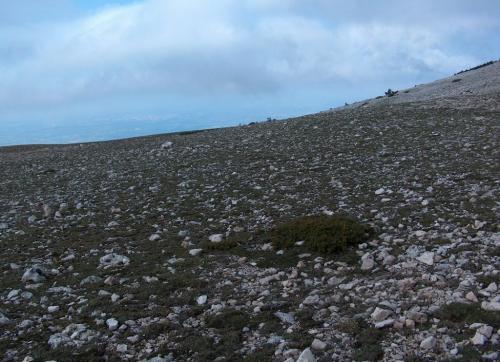
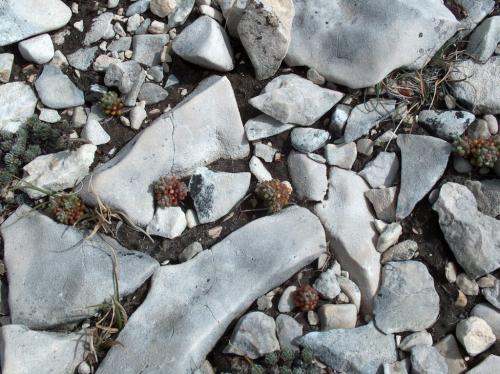
Plants in bud / en bouton :
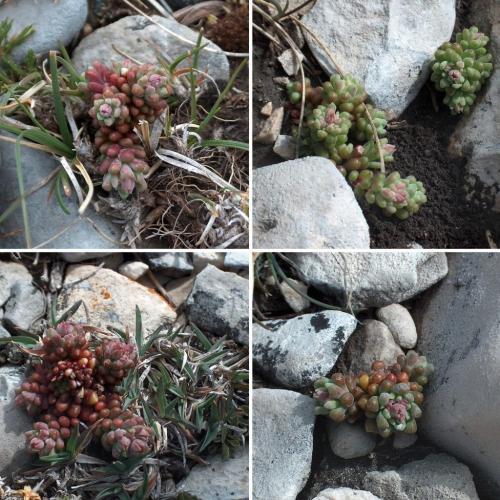
Villars de Lans - Massif du Vercors (France - Isère) 1720 m, limestone / substrat calcaire. (1. August 2008) :
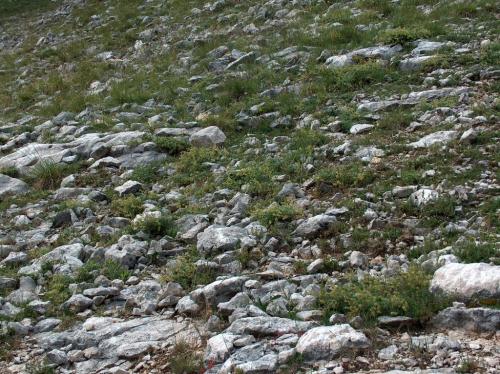
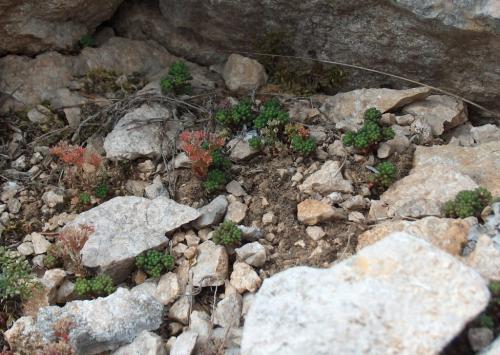
Plants with seed / fructification :
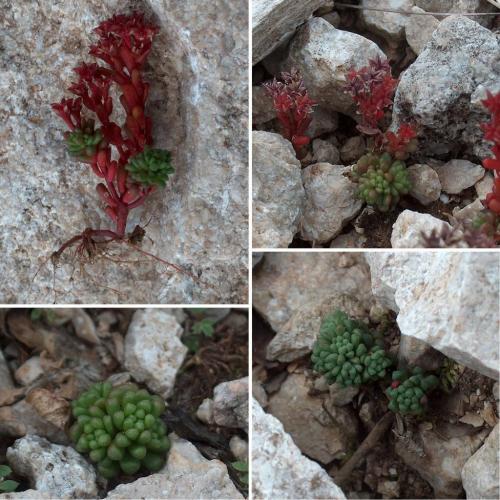
Photos Eric Barbier
S. atratum en fleur - Commune des Orres (France - Hautes Alpes) alt. env. 2700m, juillet 2011 :
